
with contributions by Keith Wittenstein. Special thanks to Sarah Court, Dinneen Viggiano and Trina Altman for editing and feedback
This article is Part 1 in a series on shoulder biomechanics.
Originally, yoga postures were practiced to obtain spiritual enlightenment, not for musculoskeletal health. Renunciates used their asana practice to tame their unruly flesh in order to be able to sit for excruciatingly long periods of time in meditation. Ironically, the demands of today’s technology-driven society have resulted in a similar detachment from the body. Whereas the holy practitioners of old were subordinating their bodies to attain enlightenment, we disregard our flesh for the purpose of greater time online.
Today, yogis use their asana practice to nourish their joints with movement and avoid the musculoskeletal diseases caused by extended periods of sitting. It follows then, if we are practitioners and teachers who do make musculoskeletal well-being a primary goal of our contemporary approach to asana, we will be better capable of meeting that goal by continuously seeking to understand more clearly how this system works. A keener understanding of anatomy will help us practice and teach movement in a way that promotes greater musculoskeletal health. Perhaps more importantly, it will help us avoid movements that might sabotage that health.
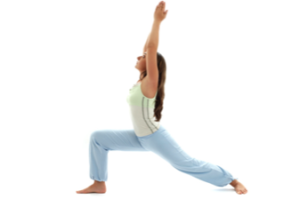
Toward this end, one popular alignment cue in yoga that we will run a fine tooth comb through in the following series of blog posts is the cue “soften your shoulders away from your ears.” Positionally, in anatomical terms, this cue asks for the shoulder blades to depress, or to move away from the head toward the hips. It is a cue frequently given as a matter of course at all times in almost every available arm position in asana regardless of the arms’ orientation or whether or not they are bearing weight. Meanwhile, it’s clear that the shoulder blades can move upward toward the head. (They specifically do this in two different ways known as elevation and upward rotation, actions we will differentiate between and explore in depth in this blog post series.) It’s also clear that the muscles that cause these upward movements of the shoulder blades are relatively large, so it begs the question: why would we have such big muscles that cause the shoulders to lift if we were never supposed to use them?
Furthermore, why is it that the “shoulders down” cue is not universally shared in other physical domains? Inquire about lifting heavy barbells over your head to an Olympic style weight-lifting coach and they would have a lot of pointers for you, but one you would not hear is to move the shoulder blades down. Go to a gymnastics coach and ask about handstands or vaulting and they might even tell you to shrug your shoulder blades up towards your ears to push the ground away. In yoga asana, there are many postures that resemble the aforementioned overhead positions – the position of the shoulders that we will specifically examine in this blog post is 180 degrees of shoulder flexion. This is the position of the shoulders when the arms are overhead, as in handstand or warrior I.
This series’ aim is to give a more nuanced understanding of the shoulder blades’ movement when the arms are in the overhead position and potentially refine the way you activate and cue the shoulder blades when the arms are in this position. It will also address some of the inefficiencies of pulling the shoulder blades down, known as depressing them, while moving the arms overhead.
It’s also important and interesting to note that among the three aforementioned practices – yoga asana, Olympic-weightlifting and gymnastics – only yoga has deep spiritual roots that many continue to actively engage with today. The implications of this mean that even though all involve positioning the body in different ways to load it against gravity to gain strength and mobility, yoga’s philosophical roots can place a strong emphasis on the continuation of sacred teaching lineages.
This ancient teacher-to-student transmission has implications for the physical minutiae of our practices. In yoga philosophy this transmission is called Parampara, which literally means uninterrupted series, or succession. Teachings that formed the basis of each yoga lineage were passed down by transmission of direct experience from guru to student. This style of learning sounds a lot like the apprenticeship model today that is still valued as one of the most effective ways to learn by top pedagogical experts. It’s the basis of parent to child learning, the basis of learning to be a public school teacher, the basis of learning to become an electrician, the basis of learning to be human in all respects. But, it too has its faults that are worth examining.
For one, the expectation that everyone teach what their teacher taught confers a certain unquestioned veracity and weight to the knowledge and information that the teacher passes. An assumption is often made, or it is tacitly or implicitly communicated, that whatever information came from the source is infallible information. The flaw in this method is two-fold. One, the source is not always correct. Two, as is quickly evidenced in a game of telephone – misinterpretations of information can multiply the more times the story is repeated. In case you never played telephone in elementary school, it’s a game in which one person in the circle whispers a story into the next person’s ear who then attempts to repeat the same story to the next person and so on. By the time the last persons tells the story out loud to the group, it has become almost completely unrecognizable from the original.
In other words, as new teachers learn and then turn around and repeat the teachings of their teachers, the potential for repetition of erroneous information as hard fact (and often times in the yoga sphere, as sacred fact) can easily lead to a dogma-laden, blind type of adherence to a belief system that has not yet been deeply understood or independently questioned or verified by the student. On the path to learning anything, students must be simultaneously open, both intellectually and experientially, to the information imparted by the teacher. However, students must also feel emotionally empowered enough to be able to spend some time examining the information for themselves, and to question and express doubt toward that information, especially if they’ve heard conflicting information or if what they are hearing is not in line with their own direct experience.
And so, contextual groundwork laid, we hope to entice you intellectually and experientially with this series on shoulder mechanics as we take a critical look at the cue “move your shoulder blades away from your ears” when the arms are overhead. Keep tuning in over the next few weeks for the rest of the posts!


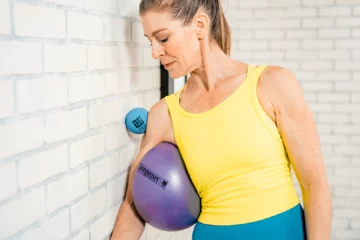

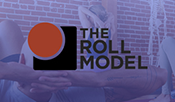
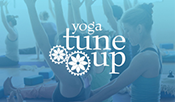


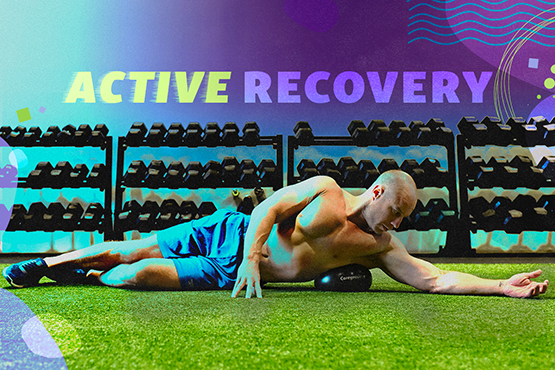
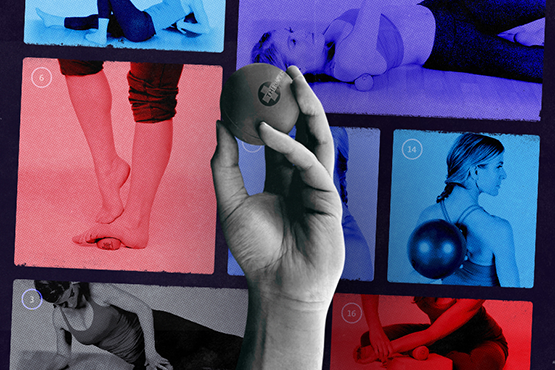
“Soften the shoulders away from your ears,” this is a cue I am guilty of using. I look forward to reading through this series and exploring the mechanics of the shoulder blades, so that I can cue better. While I think “softening the shoulders away from the ears” can be valuable in helping people relax; perhaps it shouldn’t be used in postures where the arms are in active flexion.
Thank you for pointing out the dangers inherent in simply repeating what is heard. As a new teacher, I find the voices of my favorite teachers coming out of my mouth before I even realize it. I think it’s a natural thing, that first we repeat, then we expound from that. I’m now prompted to pause to critically review the cues I seem to be saying the most.
I read your post on Upper Traps in this series and had to circle back to Part 1 because the information is really informative. This too is a great post. I have to say I struggle with how to respect the lineage and history of yoga but feel it’s important to speak to good body mechanics so as not to have anyone injure themselves, so thanks for speaking to this.
I confess I’ve used relax your shoulders down, lengthen your neck way too many times, habits picked up from so many different sources. I love your approach and am diving in deep on your shoulder series.
This cue to “draw the shoulders down the back” while the arms are fully flexed has driven me bonkers for years. I had a teacher who suspected this came from the idea that we don’t want to clench our traps and that that flexion should allow for some elevation and a lot of upward rotation but that just the tops of the shoulders were meant to soften a bit and that this cue ended up (much like you describe) getting exaggerated as it went on down the teacher train until everyone was telling their students to actively “pull their shoulders down”. I am so excited to read the rest of this series!
You’ve brought forward some of the major discomforts I’ve had with parampara. What happens when we’re just parroting something incorrect for two millenia? And why are our teachers instructing us not to ask questions or truly learn? It seems more about transmitting the keys of authority rather than sacred knowledge. Love this post.
I had a teacher who would say, “look at anything, don’t believe everything” – he was always trying to encourage us to think outside the box and not believe everything we learned. I completely agree with you – not only does the possibility for error exist, but teaching things the same way doesn’t leave room for the individual. That’s what I like so much about YTU, a good instructor will always take the individual (body type, injuries, capabilities, restrictions, etc.) into consideration.
So true!! Perception and point of view are everything. We all have different filters. Would have never thought of the telephone game! Great idea!!
Laurel,
I appreciate this series of blog posts on shoulder biomechanics and especially your thorough coverage of the misguided cue of “softening your shoulders away from your ears.” In my initial yoga teacher training, I was taught that upward rotation of the scapula should occur during shoulder flexion. But even though I knew better, as a new yoga teacher, I often found myself wanting to cue the softening of the shoulders. I think it was a combination of hearing it so much from other teachers as well as seeing what looked to me like tension/overwork in my students. I would try different cues – like asking students to relax their necks and allow the effort of holding arms overhead to be supported by the upwardly rotating scapulae. Or focusing on the lateral border of the scapula lifting while the medial border lowers. But after reading this post, and in the spirit of our learning never stops, I’m coming back again to question my cueing. You make a great point: “why would we have such big muscles that cause the shoulders to lift if we were never supposed to use them?”
Excited to read through the whole series. “Re-validation” of common yoga teachers cues is my favorite topic. Yogasana world is fluid and ever changing, receptive to new scientific discoveries, medical findings or simply common sense. That’s one of the reasons I got pulled to it in the first place. Teachers like you sustain my interest further.
Lovely introduction to your series which I am excited to read. Right now I find myself at this point of question, questioning what and why we have done certain thing just because it is how it has been passed down or ‘that’s just how it has been done’. Great description of telephone as to show how information gets distorted and diluted along the way.
You have raised some interesting observations there Laurel, especially in regards to your Game of Telephone ( known in our house as Chinese Whispers). The way imformation now is so quickly and easily disseminated through Twitter, Instagram etc it can often get a life of its own and be “taken for read” – without anyone checking the source, sample size or bias. Thank you for reminding us to always keep questioning and to listen to our own or our students bodies. X
Thanks Laurel for this piece which continues to spark interest in the variety of terms commonly used today. The gurukula(teacher to disciple) system was very well founded and the traditions / Parampara was one in which the priests took pride. It is very interesting to see the developments as in the past few centuries. I look forward to reading and following the blog post about this commonly used cue of shoulders away from the ears.x
Thank you for this post, Laurel. I have been teaching for almost 7 year now and I still find it supremely challenging but very exciting when new information I learn about the body directly contradicts what I have learned before, either through direct experience or from my teachers. I think that the quality of trust/faith in a teacher or guru is often valued above other important qualities such as personal inquiry and study. As beginners in any practice, it’s can be useful and sometimes necessary to be given such black and white instructions, but if we intend to move any deeper into the practice, we have to be accountable for integrating new teachings and self-discoveries that challenge our perception of what is “the right way”.
Thanks for sharing this. I often hear this cue a lot, and I had accepted it as true since so many different teachers have said this throughout class. It comes to the point where you convince yourself that you have more stability when you depress your shoulders, even with weight bearing exercises. I’m looking forward to reading more about the shoulder joint, where stability lies in the student, particularly in weight bearing movements where injury can occur is stability is not achieved.
Comparing Parampara to the game of Telephone – brilliant! It can be so easy, so seductive, to accept fully and without questioning the teachings of a teacher you admire. And with each transfer of information down the line, the original information can become lost in the mists. No better example than the well-meant but misguided “move your shoulder blades down your back.” Your thinking is so clear, logical and anatomically intelligent, as is your expression of it. This was such an “enticing” 🙂 post to encourage us to always explore and think about the whys.
Questioning the often inappropriate and seemingly ubiquitous cue “move your shoulder blades down away from your ears” was one of my first aha moments in teaching. This directive was abound during my 200-hour teacher training (which I would not recommend) and each time I asked “why” the only answer seemed to be blind adherence to yogic dogma, which as you point out, may not have translated gracefully over time and space. Having since met and worked with yoga practitioners who actively seek to answer the question “why” critically and personally, I will never follow another teacher who does not strive to contextualize ancient movements within modern bodies. I believe that B.K.S. Iyengar would be rolling over in his grave if he knew that the yoga community was not evolving asana to assimilate new knowledge. Thank you for being one of those standout teachers who cares enough to think critically and often about what they are asking their students to do with their bodies – because it matters.
This post helps me orient myself into a more codified way of teaching such as YTU from my background in Somatic Movement Education, one that emphasizes loosely choreographed individual movement explorations. I feel that this is what happened last weekend with my Sankalpa and I appreciate you explaining in such detail the reasons for what gets taught and why it gets taught.
I have to admit that for a while I was guilty of this cue. I don’t even remember where I picked it up but I met so many people with pinched shoulders and at the time that was the only direction in my tool kit. It wasn’t until I learned about crawling and dragging exercises that I started to understand/be able to show what a healthy shoulder was capable of. If anything this article reminds me to reexamine my other preconceived notions about what is good movement.
This cuing is of particular import to me. I understand the source of the sentiment. Supporting your students in relaxation techniques that destress and down regulate the nervous system can be a life saver for those marching toward a heart attack or other chronic stress-induced diseases or injuries. That said, anatomically-speaking, “draw your shoulders down your back” or ” tuck your shoulder blades into your back pockets” disrupts the glenohumeral and can destabilize the joint. This makes utthita hasta in tadasana problematic, down dog more so, and handstand a wildly wacky idea … and possible march, not to a heart attack but a dislocation, tear, or frozen shoulder. Understanding the mechanics of the scapula and humerus is needed for all teachers, and I am so glad you gave voice to an integral topic for our community.
Thank you for this blog, In totally agree with you that new teachers should not automatically repeat cues from their teachers, but critically look at them and do research them self.
Keepin it 100, Laurel! After hearing it so often in class, “shoulders down” became my cue outside the yoga studio as well, a frequent reminder to relax, to keep my shoulders out of my ears when I’m stressed or not paying attention. But examining whether or not it’s always the appropriate cue in asana is so exciting to me. Color me enticed!
#awarenessisthesuperskill
Thank you, Laurel, for sharing your insights! I love how you have tailored your teachings so that they are relevant and accessible to the 21st century person who is no longer living in a natural environment. Not only is anatomy and biomechanics useful to know, but it is our responsibility as movement professionals and yoga teachers to get a more in depth understanding of the body and how it moves safely. Can’t wait to read more!
This is great Laurel, I really enjoy these articles that acknowledge the roots of some of the familiar alignment cues and break down how and why they may not always be ideal without being sensationalist or dismissive. Very informative and great balanced tone. Looking forward to reading the whole series.
Thank you Laurel for setting a thoughtful context for this blog series on the nuanced understanding of the shoulder girdle movements in the overhead arm position. I appreciate your acknowledgement of yoga’s roots while encouraging us to put on our exploratory lens into the lab of our own body for our own experiential understanding and verification.
Our teachers give us our strong foundation but true learning is what we experience and become aware of in our own body. It is from that place we can teach authentically.
I will never say “depress your shoulders” ever again! I love that the question is being raise “why do we do this?” I can’t wait to read even more of your post regarding this!
Hmmmm…definitely food for thought. Thanks!
I love what you are saying here and look forward to this series on the topic of shoulders. My injured shoulders are my teachers right now so I am re-examining everything I’ve ever learned about positioning and using the shoulders. I’ve experienced the kind of telephone game issue that you bring up and it really happens all to frequently in the yoga world. A respected teacher says a “thing” that is relevant to a certain context and then that “thing” becomes dogma. Not only is it now dogma but then it’s regurgitated and morphed and taken out of context. The result is generally not useful, if not harmful. It’s always good to understand the why so we can then more intelligently apply alignment cues based on context and who is standing in front of us and what they actually need.
So very true. I hear this cue constantly and agree it becomes so displaced in the world of yoga. We carry so much tension in the shoulders to begin with, actively pulling them down the back in postures that naturally require elevation creates such a tug of war.
This blog brings to mind the words of the Buddha. Don’t believe what I say, experience it for yourself.
Look, listen, practice and learn. Sage advice for students and especially teachers as we too should continue to study yoga and explore anatomy.
So true. Students come to class because they think yoga is good for them. To choose to vary from a particular yoga lineage when a posture could be better for a student when done in a different way is responsible and innovative. It’s so great to examine the postures from an anatomical standpoint in Yoga Tune Up.
Love the reference to a game of Telephone, how true it is. Misinformation is spoon fed and often the students/teacher trainees are so eager for knowlege, they drink it all up without any analysis or questioning, and pass it on in vague detail to their own students. It is vitally important that we take responsibility for our words and our teachings. If you can’t answer valid concerns or detailed questioning about a topic, perhaps consider leaving it out of your classes until you have a chance to study more deeply. That being said, for those of us who value such effort and ownership, it can be difficult to determine what to teach and what to say a all, given the ongoing research and many sides to each story. I think the “shoulders down” rhetoric is a relatively easy one to see as nonsensical from a biomechanics point of view (although not so easy to break said habit, IMO!)
As a teacher myself, I can really follow my own evolution in my style of teaching as I learn more and more. Nowadays there is such a vast amount of information that we receive, so we have to put a lot of thought and practice into what we pass on. I also had to accept that I maybe wont be the perfect teacher for everyone, as we all have different needs and different bodies. Working with the Yoga Tune Up gives me a better understanding of others bodies and their needs, so that I am a lot more confident in what I pass on to help people to heal and feel good.
I can really identify with this post. I started my career with CrossFit and personal training and quickly realized that I was just parroting cues I had heard along the way without truly understanding what the cues meant and if they were appropriate. I appreciate YTU for approaching movement from a knowledge perspective, not just repeating the same things we have been saying for years. I feel like a big problem with the fitness and health industry is that we have just been repeating the same things over and over even as our movement landscape has changed, and so we left behind true understanding of human movement and became mimics.
What resonates most with me is the idea that as students (and as teachers), we must stay simultaneously open and also have the space to question facts, while also taking into account our own experiences. “Shoulders down and back” is something I’ve heard (and admittedly taught) again and again. I do think it’s a somewhat complicated coordination to figure out. Many students, when they lift their arms, also naturally lift their shoulder blades. When I was learning this, I found it difficult to lengthen through the humerus and spread my carpals while depressing the shoulders at the same time. I look forward to reading more on this series.
Proof that we need to have more sophisticated understanding of the shoulders and our cookie cutter cues when teaching any group of folks! We need to develop the ability to look at students, identify what’s working or not working, and then assist as necessary.
The honesty and humility it takes to be a constant student, as a yoga teacher, is what makes a good teacher. I appreciate this article in pushing out this type of information so that we can all continuously grow and learn about the human body together.
I agree that it’s important to question why we are doing poses a certain way: is it due to habitual movement, the way we were taught to do the pose, or what the body needs in the moment. As stated in the article, it’s important for all yoga practitioners, teachers and students alike, to be open enough to explore how the body is responding in a pose in a particular moment.
I agree with the idea of listening openly to what a teacher or instructor teaches you. Do not believe everything the instructor tells you and do your own research if think the information delivered may not be correct. As they explained with the telephone game, the message at the start may have been the correct information, but the way the student interpreted it or understood it may be different than what actually is, and therefore explains it differently, and eventually, becomes completely different from what it originally was!
After reading your post I reflected on the cues that I sometimes give during my classes. I have found that the best way to not repeat mindless comments is to have your own practice. The comments I make that feel real are the one that are integrated in my body the one I have experienced myself. Those comments have clarity, a direction and even sometimes an imagery attached to them. There is definitely a lot of myth to unfold and this is where the anatomical knowledge comes in play to support the cues given to the students. thank you for your post I am looking forward to read the next one.
What a great point of view. Yes Traditional Yoga Asana roots in spirituality and is just one limb of yoga, and yes it is ok to re-evaluate what we are cueing and see if it actually makes sense for the pose at hand. Great post!
This is why I love Yoga Tune Up. I feel secure that the information passed on has been evaluated and time has been spent verifying the information to ensure it is as up to date as possible and the coursework is being continually adjusted to be the best possible. I certainly feel like I am in a much more confident position to analyse the content of the classes that I personally deliver since my YTU training.
It’s so nice and refreshing to know that there are teachers out there questioning and studying to adapt ancient teachings to our present life. Our current lifestyle, bodies and overall health are not the same that those ancient teachers. I’ve always struggled with that cue “depress your shoulder blades, pull them down away from your ears” as I wanted to do it without knowing what should I do it. Part as a lack of self proprioception on that area but also, lack of understanding the biomechanics of that movement. I think as students of our bodies, students of our students and students of our teachers, we need to be constantly challenged to go further and understand how one body moves differently from another, how a body reacts to certain cue differently than the other but more importantly, how the biomechanics for every move works so we can offer an explanation simple and easy to our students. This is a great article by a great teacher.
It is indeed interesting to consider the paradox that ancient yogis prepared their bodies to sit still, in order to look inward in meditation, but that most of my students are seeking to practice yoga asanas in oder to address the unfortunate consequences of sitting still, looking inward into their computer screens (as I am doing now).
As for parampara: you need only to listen to bickering siblings to see how quickly information gets distorted.
” Mom SAID to clean your room!”
” She did NOT! She SAID, she’s going to get drunk in a saloon!”
I HEARD her say that we HAVE to watch cartoons!
I definitely believe that as we develop a greater understanding of biomechanics, it can inform and reform asana practice today to prevent injuries without losing the *spirit* of ancient yogic teachings. i definitely think the yoga community can hugely benefit from these updated cues/clues that reflect our anatomy and have more specificity in language to guide proper alignment!
Thank you for writing this article. It is so important as teachers (and humans) that we question why we do things in order to evolve and grow. My overworked lower traps thank you!
There is always more to know! I do tend to scrunch, shoulders up habitually, but it sounds as if pure depression is not the full answer. On to the next installment
As I learn more YTU, this is exactly what I am experiencing. I am starting to question the teachings that have been imparted to me. This is not to fault my teacher, but instead shows that I have not been as active a student as was necessary.
couldnt agree more! our bodies are so different then ancient bodies. i think its so important that we understand todays body. I also think its really important to know what we are saying as teachers and not just memorizing a script without any validation.
I love the start of this article flipping the prolonged sitting postures of meditation and yoga and the usefulness therein as compared to the de conditioning declining prolonged sitting many people do for school work and play.
oh truth! When I first started the practice of yoga I was totally devoted at doing everything he/she would ask us to do even though it felt wrong. I was completely trusting the person in front and not trusting me. thanks for the reminder.
… now that I’m taking yoga tune up, my shoulders are trying to find their place…
I loved the “Game of Telephone” analogy. It is so true, we repeat what we learn from our teachers and most of my teachers are not anatomically trained. My own self-journey has led me to inquire why. I love knowing what the correct way is to receive the most benefits for the body. That is why I have chosen Yoga Tune Up – it gives me answers and foundation for my transition from just “hanging in the pose” into consciously including the muscles and joint for building strength and opening to embrace “new me” in my postural alignment. I do a lot of Jill’s DVD paying attention to her detailed instructions. After I am done, I always feel like I have created new pathways in my body and mind.
I find the answer to many of the issues raised is – “It depends.”
Also there is a necessary self investigation that is my responsibility as a student of my body. I appreciate your perspective. As the Buddha says, don’t take my truths to be yours but if it doesn’t work or feel right, go find your own truth. With that I will have to experiment with shoulders both depressed and elevated and will report back.
Laurel,
I was fortunate enough to student with a “guru” for 35years and I totally get what your saying and in fact I believe it’s very true. Everyone will have their way of interpreting based on there own other experiences, body ailments, strengthens and weaknesses basically interpreting what’s important to them at the time they’re are learning it. When reviewing notes and books that I have had for years there is always a whole new bundle of imformation and we definitely see things different ly as we grow older. Thanks for pointing this out it’s something to keep in mind and be aware of particularly if you are passing on the imformation.
The shoulders are such a dynamic and interesting anatomical conundrum for me, both as a yoga practioner and as a teacher of yoga. I’ve found that with all asana, the body adapts and what was once new and challenging can quickly become repetative and potentially harmful and the shoulders seem to be at the forefront of that process. I’ve had to deviate from my teachers teachings to explore areas of weakness and over tightness. I look forward to learning new information and perhaps gaining a bit more clarity. In the game of telephone – the original story or in my case yoga cues regarding shoulders – I tend to crinkle my nose at what the original way now feels like. I’ve come to adopt the ways I’ve adapted over time to the original message from my first teacher.
Enjoyed the tone of the article to stay in inquiry and not in dogma, and looking forward to more information on effectively cueing the shoulders of the 21st century (and of course the rib cage that the scapula glide over). The article also hints at teaching to the bodies in front of you, instead of from a script, and that the nature of yoga may be changing. Although devotees will still hold steady to Patanjali’s adage to still the chitta verity narodaha or the fluctuations of the mind, and that there are eight limbs of yoga, asana being only one of them.
Looking forward to reading further posts on cueing effectively for shoulders (and of course the rib cage that the scapula glide over), and more importantly, encouraging Teachers to cue for the bodies and structural patterns they see in front of them, not from a script.
I recently completed my 200hr training and there where times in it that I wanted a more modern/anatomical reason for the poses. Many times my questions came from cues engrained from years of classes prior to the training. Thank you for article and I look forward to the rest of the series.
I like the mention of the game of telephone here. Cueing can be taken out of context very quickly and some students may even over correct when performing poses. For a pose like warrior I or any movement that includes overhead reaching it’s important to educate our students in that it may be an overpowering of the lats and insufficient lower trapezius activation. The lower trapezius helps initiate shoulder flexion and most people that are cued with “lower or soften the shoulders away from the ears” tend to engage the wrong muscle to begin with. The key is identifying the dysfunction, which is upward migration of the humerus due to weakness somewhere in the shoulder. As a physical therapist, whenever I observe this in class I try to take a mental note of the student and inform them. There are specific drills to avoid this, as a limitation may also be coming from a lack of true shoulder mobility and compensation from the thoracic or lumbar spine. As a teacher, assessing proper breathing, spinal alignment with shoulder flexion and proper core stability are also factors that can affect overhead movements. Look forward to reading part II.
As someone who constantly asks “why?”, I loved this post. What’s so unique and wonderful about YTU is this spirit of inquiry that allows for adaptation of the practice based on the latest anatomy and physiology research. While there are a lot of good things about yogic tradition, it is important to step back and ask questions, rather than automatically assuming that the way we were trained is the “right” way to practice. Information is power.
This was a great article can’t wait to read the next part to see where she is headed with where the shoulders should be. I especially like the part about telephone and questioning.